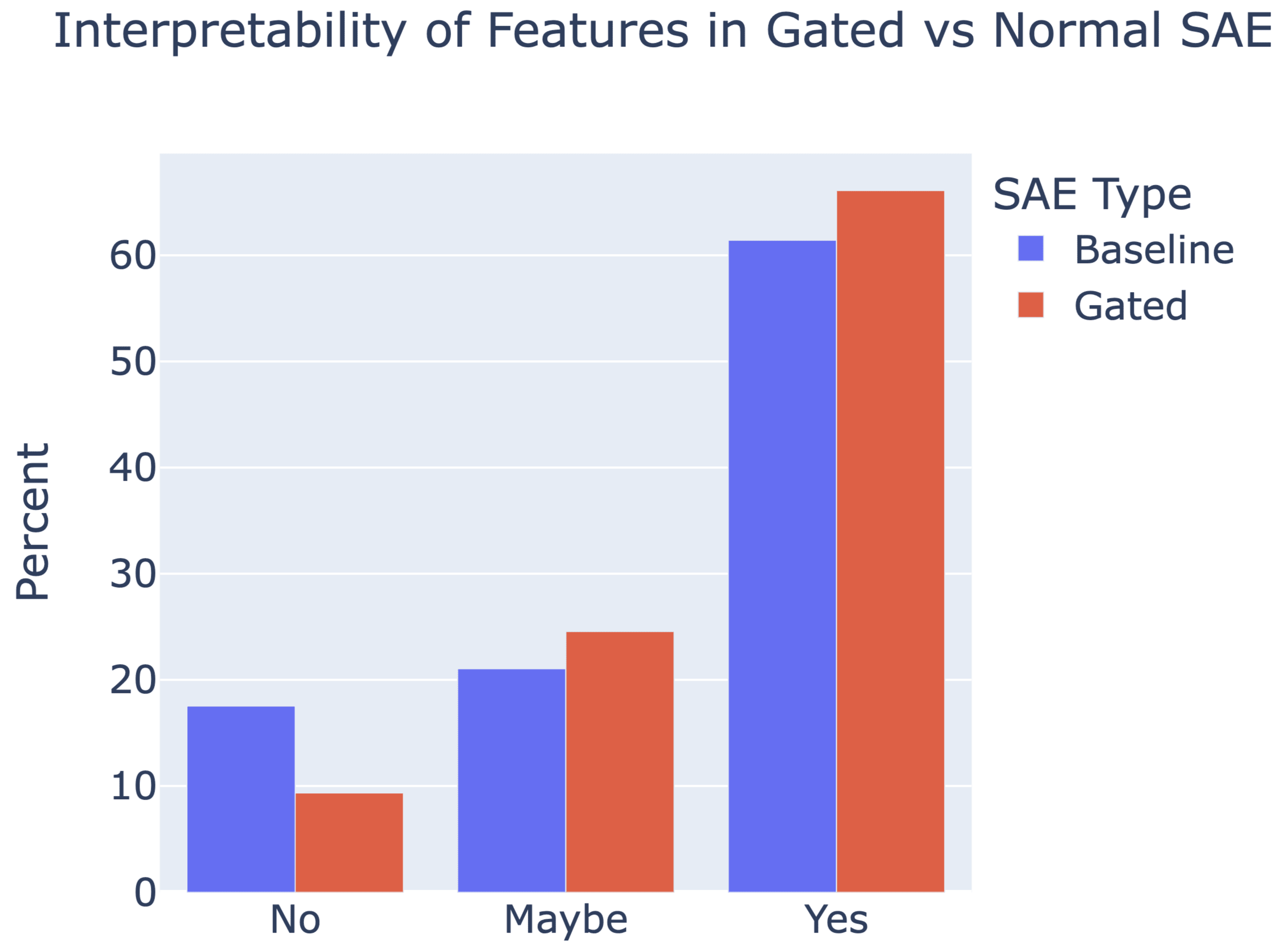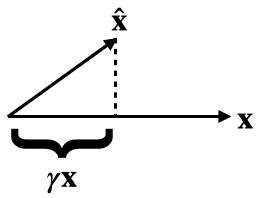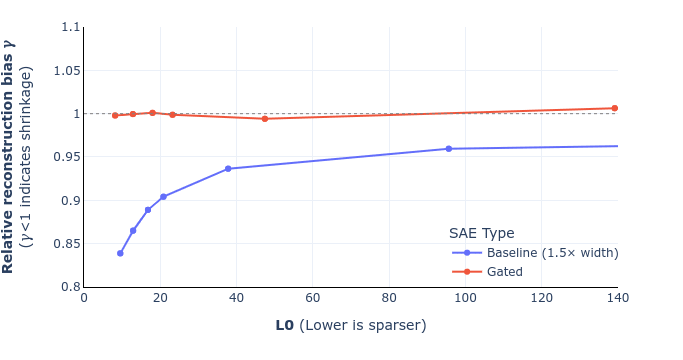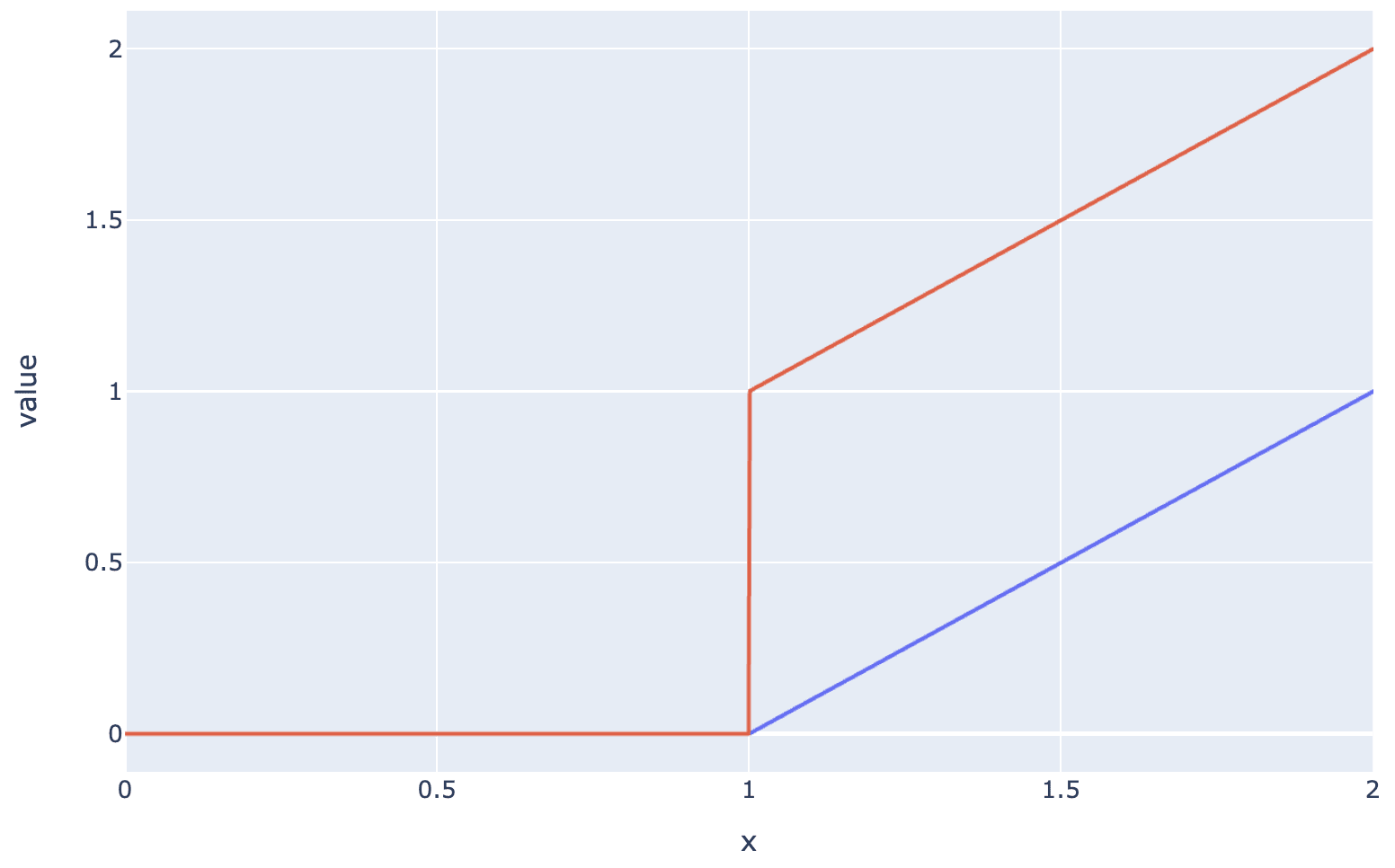Authors: Senthooran Rajamanoharan*, Arthur Conmy*, Lewis Smith, Tom Lieberum, Vikrant Varma, János Kramár, Rohin Shah, Neel Nanda
A new paper from the Google DeepMind mech interp team: Improving Dictionary Learning with Gated Sparse Autoencoders!
Gated SAEs are a new Sparse Autoencoder architecture that seems to be a significant Pareto-improvement over normal SAEs, verified on models up to Gemma 7B. They are now our team's preferred way to train sparse autoencoders, and we'd love to see them adopted by the community! (Or to be convinced that it would be a bad idea for them to be adopted by the community!)

They achieve similar reconstruction with about half as many firing features, and while being either comparably or more interpretable (confidence interval for the increase is 0%-13%).

See Sen's Twitter summary, my Twitter summary, and the paper!




(The question in this comment is more narrow and probably not interesting to most people.)
The limitations section includes this paragraph:
I'm not sure I understand the point about integrated gradients here. I understand this sentence as meaning: since model outputs are a discontinuous function of feature activations, integrated gradients will do a bad job of estimating the effect of patching feature activations to counterfactual values.
If that interpretation is correct, then I guess I'm confused because I think IG actually handles this sort of thing pretty gracefully. As long as the number of intermediate points you're using is large enough that you're sampling points pretty close to the discontinuity on both sides, then your error won't be too large. This is in contrast to attribution patching which will have a pretty rough time here (but not really that much worse than with the normal ReLU encoders, I guess). (And maybe you also meant for this point to apply to attribution patching?)